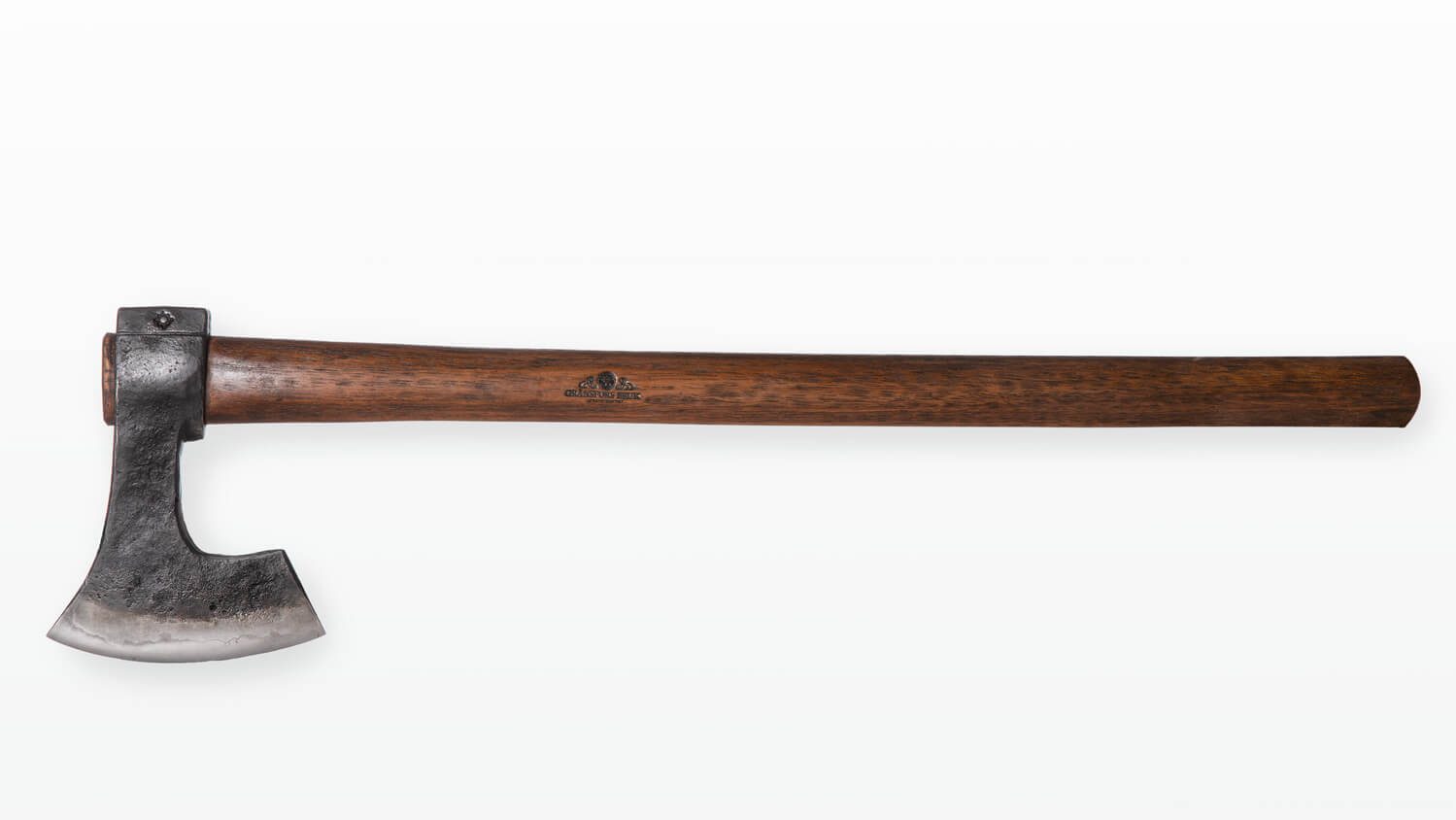Bearded axes are medieval weapons used in Scandinavia that feature a long cutting edge where the heel extends lower than the throat of the axe handle, allowing the wielder’s top hand to be safe behind the blade.
Bearded axes are a popular style that you can find in specialty hardware stores, generally as Viking axe replicas. They are often made with high-quality wooden handles and ornate designs and inscriptions. Their design makes them extremely useful for bushcraft tasks like carving. You can find bearded axes made from such high-quality workmanship that they will last for generations.
In this article, I have explained the design features of the bearded axe, its history, and the most popular modern brands.
Table of Contents
What is a Bearded Axe?
A bearded axe is a style made famous by Viking warriors throughout Europe and Scandinavia. The main feature is the length of the cutting blade, with the heel dropping below the throat of the axe handle. This allows the user’s hand to be protected entirely behind the edge.
The beard also reduces the head’s weight compared to an axe with a similar length cutting edge.
The ability to control the blade from directly behind it makes it much more accurate in applying force for delicate tasks like carving.
The term ‘bearded axe’ is named after a human beard and if you consider the axe head to be a face, then you can easily imagine the beard falling below a normal axehead.

Design Features
The main design feature that separates a bearded axe from a non-bearded axe is the shape of the axe head and the depth that the heel of the axe drops. This means that the upper hand can be entirely behind the axe blade while gripping the throat of the axe.
The beard also significantly increases the size of the cutting edge without increasing the weight of the tool/weapon. If the axehead was steel for the entire cutting edge, it would weigh significantly more than double the weight of a bearded axe.
If you are having trouble understanding some of these terms, please read through this article explaining the different parts of an axe.
Purpose
The beard of the axe serves two purposes – firstly is to protect the upper hand as it is entirely behind the axe blade. The second is to be able to use the beard as a hook. Both of these aspects were invaluable for the Vikings during combat. The hook could be used to pull and remove shields or weapons from their opponents.
The position of the top hand is also essential when carving or planing wood. An axe without a beard has the cutting edge several inches above the top hand, making it more difficult to apply force in a perpendicular direction. The beard drops the cutting edge and helps the top hand sit directly behind the blade and apply force more accurately for delicate tasks.
History
There is evidence of the use and design of bearded axes as far back as the 6th Century in Scandinavia. It was known as a Skeggox. These ancient weapons have been found throughout Northern Europe and the British Isles.
The classic Viking axe, known as a Dane Axe, is a long-handled, two-handed bearded axe.
Bearded axes proved a significant advantage over other axes and swords in combat. This is because the beard provided a much longer cutting edge while the wooden handle reduced the overall weight. This made the Viking axe very maneuverable and able to hook and disarm opponents. They were also more affordable than a sword because of the reduction in steel required.
The weight distribution is also much more heavily weighted towards the axehead than a sword, making the axe deliver a lot more concussive forces, even if it didn’t penetrate the armor.
Modern Bearded Axes
There are numerous modern bearded axe styles available online. These are generally Viking axe replicas but are made of such high-quality materials and craftsmanship that they are forged from steel and can be used. Bearded axes have started to become more prevalent in bushcraft because of their aptitude for delicate tasks.
These brands can be relatively expensive because of their attention to detail, but I do recommend having a look at these options before making a decision:
- Gransfors Bruk
- Mapsyst
- Biber Muller
- Drake Off Road Tools
Conclusion
Bearded axes are innovative designs that provided an upgraded weapon that allowed the Vikings to travel the world. They are both lightweight and maneuverable with functionality both in combat and domestic tasks. The head design protects the top hand from oncoming weapons and allows it to hook and disarm enemy combatants.
A bearded axe is primarily available as a replica, but you can use them as a camping axe or just for the aesthetics.
